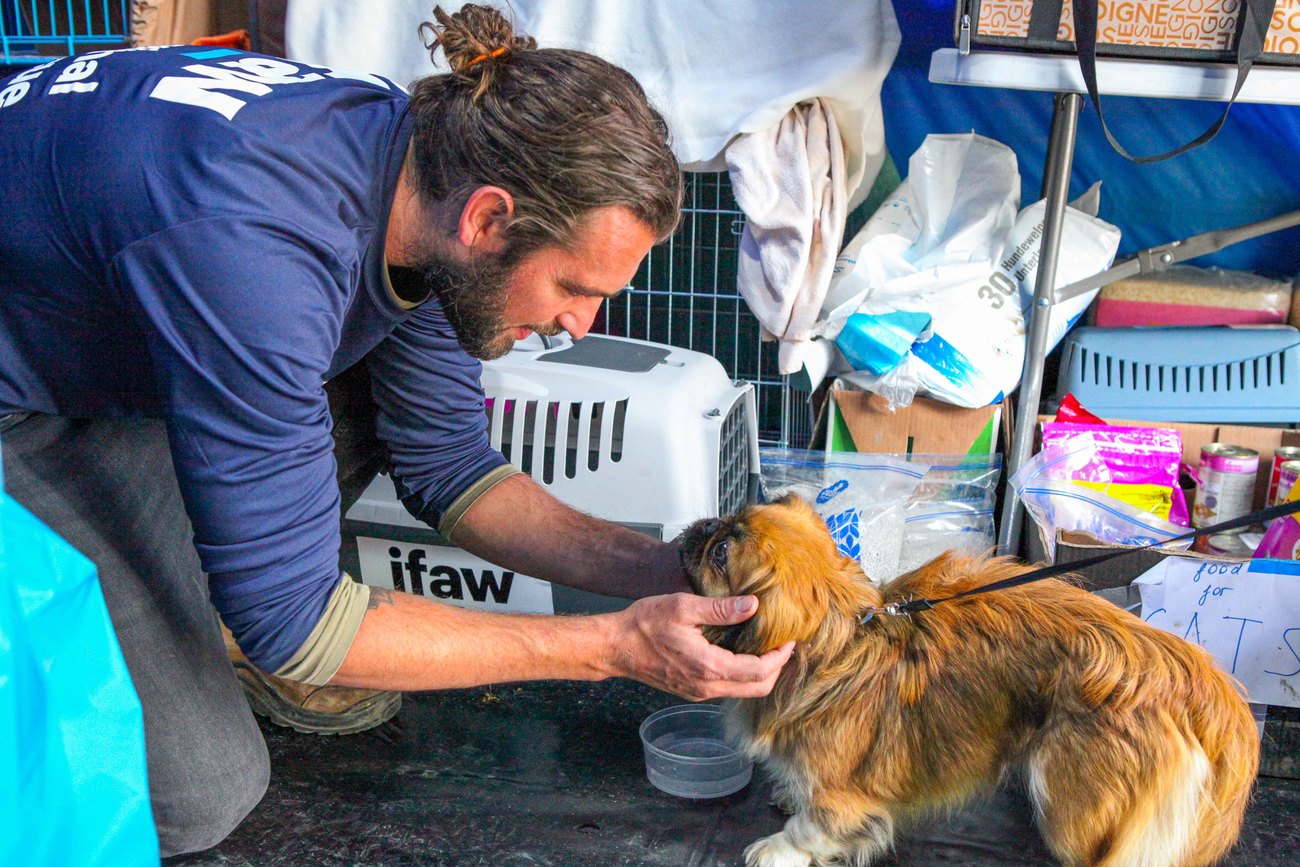Azzedine Downes
I have never been satisfied with just fighting the good fight. We need to actually make a difference.
in Ukraine, animals shouldn’t be an afterthought

Around the world, there’s a growing of sense of helplessness over the invasion of Ukraine. Political censure and economic sanctions haven’t stopped the loss of life. Meanwhile the specter of a third World War makes it feel as though world leaders—let alone the rest of us—are powerless to make a meaningful difference. But that isn’t the case.
Ukraine’s animals, from beloved pets to endangered wildlife, have thus far been treated as an afterthought by many rescue and aid operations. Undeniably, the scale of human suffering makes it easy to overlook animals caught in the crossfire. But as we’ve learned in nearly every war and natural disaster, this is a mistake with dire long-term consequences. According to researchers who analyzed decades of wildlife population trends across Africa, “the single most important predictor” of whether species prosper or perish isn’t poaching, or deforestation, or even climate change. It’s human conflict. During the Vietnam War, the use of Agent Orange decimated habitats for tigers and elephants. Likewise, wars throughout the Middle East have devastated populations of sheep, goats, cows, horses, wolves, otters, river dolphins, pelicans and even migratory birds. Foreseeably, the collateral damage of the war in Ukraine will destroy biodiverse ecosystems throughout the East European Plain. This a bigger problem than most people realize. The region’s virgin steppes and old-growth forests aren’t just home to thousands of other species. They’re also humankind’s frontline defense against global warming. Acting as powerful “carbon sinks,” these biospheres absorb gigatons of greenhouse gases from the atmosphere. As wildlife disappears from these landscapes, so will the countless plant species that depend on animals to disperse their seeds. In the war against climate change, we can’t afford to lose an inch of ground—let alone the second-largest country in Europe.
The good news is that it isn’t too late. If Ukraine’s allies coordinate with organizations on the ground to include animals in their emergency response plans, we could still save thousands of pets and wildlife—as well as the people who are risking their lives to take care of them.
Even in the most dangerous situations, relief workers are reporting many people foregoing evacuation if it means separation from their animals. In Mykolaiv, for example, rockets have hit the local zoo on at least three occasions, with shrapnel raining down around the pumas and lions; one Russian Smerch rocket has permanently lodged itself inside the bird enclosure. Despite the clear and present danger, or rather because of it, zookeepers are sheltering in place so they can care for the shell-shocked animals.
As chaotic as this war is, it presents a clear opportunity—and an urgent responsibility—for trained animal rescuers to put their expertise to work. Unfortunately, that’s easier said than done. Even in peacetime, people who transport animals run a gauntlet of tedious legal obstacles and serious veterinary challenges, especially for non-domesticated wildlife. In the middle of a war, this work is complex, time-sensitive and incredibly dangerous. Wildlife and humanitarian relief organizations must coordinate to provide animal rescuers with the necessary tools and resources to get the job done, or at least get it started.
To begin with, all human-focused rescue operations ought to be equipped with wet food, litter boxes, carriers, leashes and other pet supplies. That way, evacuees won’t have to choose between saving themselves and abandoning their pets. (If that sounds sentimental, recall the health and safety problems that snowballed in New Orleans, after thousands of pets became strays in the wake of Hurricane Katrina.)
Policymakers, too, can do their part—even from a safe distance. As just one example, the United States’ economic sanctions targeting Russia are making it impossible for wildlife organizations to transfer funds to animal shelters in eastern Ukraine. This bureaucratic oversight could be fixed in a matter of days, if not hours. And while many European countries have softened regulations for Ukrainian pets crossing their borders, many non-domesticated animals are trapped in legal limbo. The UN offers limited recommendations for transporting permitted wildlife, but there are no protocols in place to expedite animal evacuations during a crisis. Amending international regulations to accommodate wildlife in conflict zones would make animal rescues faster and safer for everyone involved.
Like most animals, humans often feel paralyzed when they’re faced with a crisis. But in so many ways, we can do more for Ukraine’s animals. And so we must. Whether or not animals are a priority for Ukraine’s allies, the reality is that if we want to save people’s lives, we need to save the animals they love.
-Azzedine Downes, IFAW President & CEO
Azzedine Downes
I have never been satisfied with just fighting the good fight. We need to actually make a difference.
Every problem has a solution, every solution needs support.
The problems we face are urgent, complicated and resistant to change. Real solutions demand creativity, hard work and involvement from people like you.
Unfortunately, the browser you use is outdated and does not allow you to display the site correctly. Please install any of the modern browsers, for example:
Google Chrome Firefox Safari